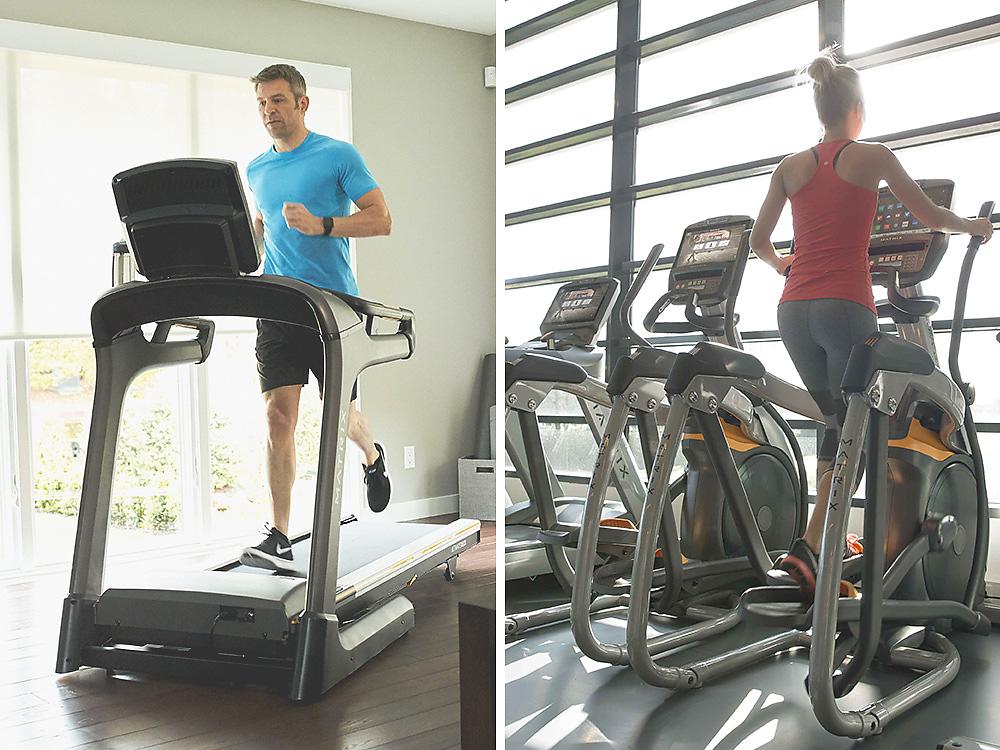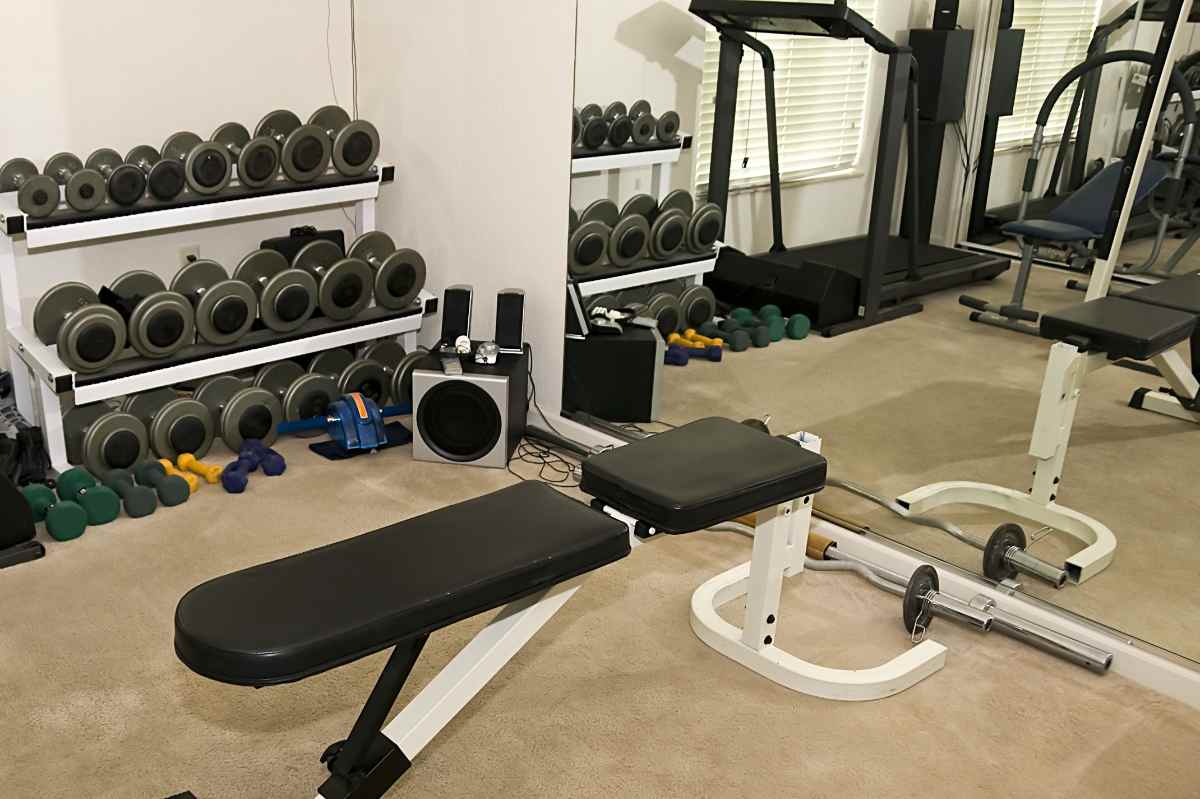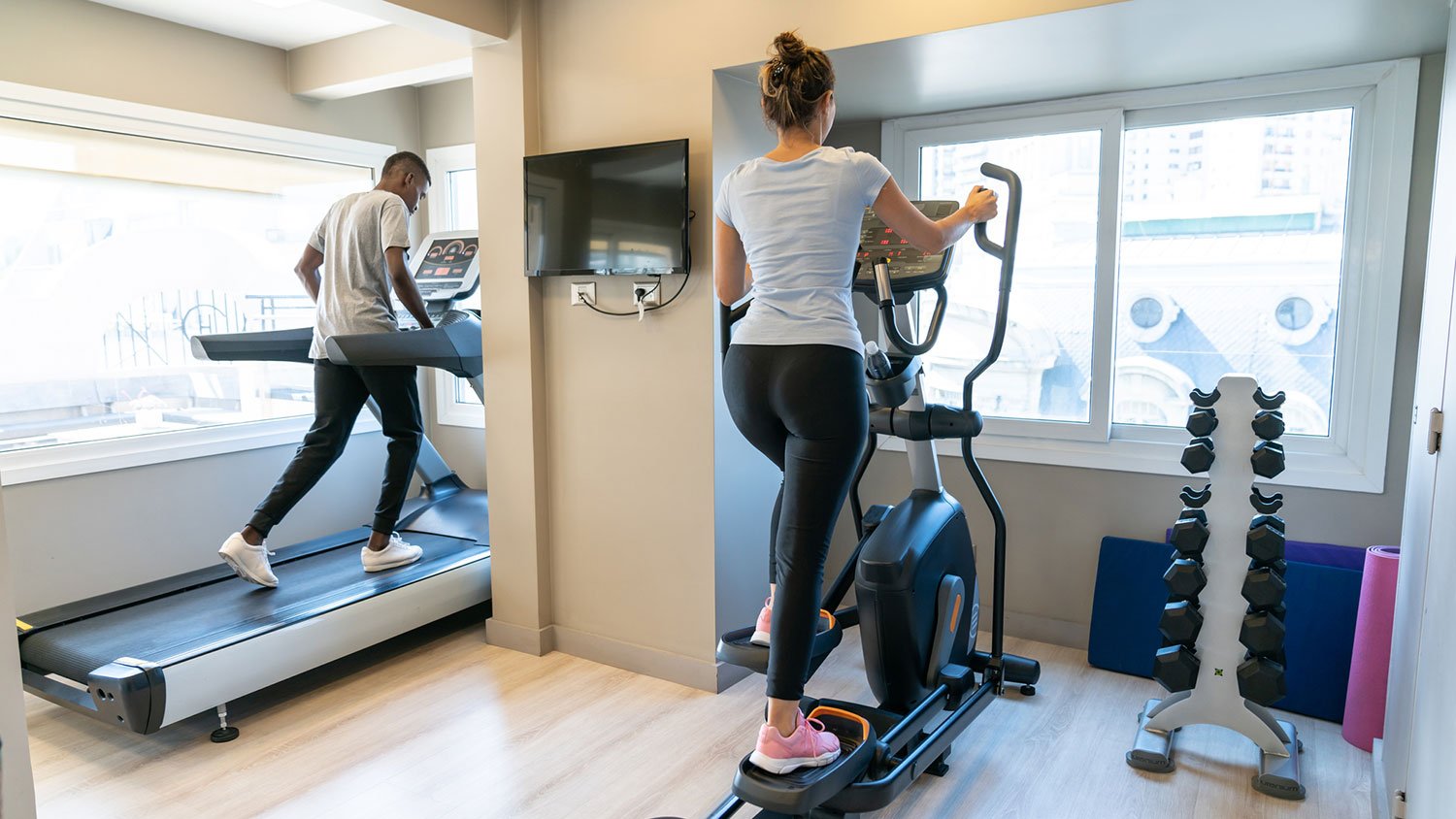In this article, I will be discussing the pros and cons of investing in a home gym system. By the end, you will have a better understanding of whether or not it is worth it to have your own gym at home. We will explore the advantages such as convenience and cost savings, as well as the potential drawbacks like limited equipment options and space requirements. So, if you’re considering setting up a home gym, keep reading to make an informed decision.
The Pros and Cons of Investing in a Home Gym System
Convenience of Working Out at Home
One of the key benefits of investing in a home gym system is the convenience it offers. Being able to work out in the comfort of your own home eliminates the need to drive to a gym, find parking, and deal with potential crowds. With a home gym, you have the freedom to exercise whenever suits you best. Whether you prefer early morning workouts or late-night sessions, your home gym allows you the flexibility to create your own workout schedule.
Time and Cost Savings
Another advantage of having a home gym is the amount of time and money it can save you. When you have a gym in your own house, you no longer need to spend time commuting to a fitness facility. This frees up valuable time that can be better utilized for focusing on your workout. Additionally, with a home gym, you avoid monthly membership fees or any other expenses associated with a traditional gym. While there is an upfront cost to setting up a home gym, over time, it can prove to be a cost-effective solution.
Access to a Wide Range of Equipment and Exercises
By investing in a home gym system, you gain access to a wide range of equipment and exercises that can help you achieve your fitness goals. Unlike a traditional gym where you may have to wait for equipment, a home gym ensures that all the equipment you need is readily available for use. Additionally, you can customize your home gym setup to include the equipment that suits your specific fitness needs. Whether you prefer cardio machines, weights, or resistance bands, you have the freedom to choose what works best for you.

This image is property of totalwellnessandbariatrics.com.
Improved Workout Efficiency
With a home gym, you no longer have to wait for equipment to become available. This means you can maximize your workout time and improve your overall efficiency. There are no distractions or interruptions often associated with a busy gym environment. You have the freedom to focus solely on your workout and achieve better results. Additionally, you can create a workout environment that suits your preferences and enhances your motivation. Whether it’s playing your favorite music or having a dedicated workout space, a home gym allows for customization, leading to improved workout efficiency.
No Waiting for Equipment
One of the frustrations of a traditional gym is the waiting time for equipment. This is particularly true during peak hours when many people are vying for the same machines. With a home gym, you never have to worry about waiting. All the equipment is available to you at all times, allowing for uninterrupted and efficient workouts. This not only saves you time but also keeps you motivated and on track with your fitness goals.
Customizable Workout Environment
Creating a personalized workout environment is another advantage of having a home gym. You have the freedom to design your space according to your preference and needs. Whether you prefer a bright and energetic workout area or a calming and Zen-like space, it’s all up to you. This customization can significantly impact your motivation and enjoyment during workouts, ultimately leading to better results.

This image is property of www.yourworkoutbook.com.
Elimination of Distractions
When you exercise at home, you eliminate many potential distractions that can occur in a public gym setting. There are no loud conversations, no waiting for equipment, and no risk of interruption from other gym-goers. This allows you to fully concentrate on your workout, improving focus and intensity. Without these distractions, you can push yourself harder and achieve greater gains in your fitness journey.
Flexible Workout Schedule
Having a home gym provides you with the flexibility to work out whenever suits your schedule best. There’s no need to plan your day around gym hours or rush to make it to a class on time. With a home gym, you have the freedom to exercise at any time that works for you. Whether you prefer early morning sessions, afternoon workouts, or late-night exercises, your home gym accommodates your needs.
No Need to Travel to a Gym
One of the biggest advantages of a home gym is the elimination of travel time. With a traditional gym, you must factor in the time it takes to drive to and from the facility. This can be a significant deterrent for those with busy schedules or long commutes. However, with a home gym, the travel time is zero. You can simply walk into your designated workout area and start exercising, saving you valuable time and energy.
:format(png)/f/115220/2400x990/25453c2631/top-6-reasons-to-invest-in-an-at-home-fitness-system.png)
This image is property of img2.storyblok.com.
Freedom to Exercise Anytime
In a traditional gym setting, your workout schedule may be limited by the facility’s hours of operation. This can be particularly inconvenient for individuals with fluctuating work or personal schedules. However, with a home gym, you have the freedom to exercise at any time that suits you best. Whether you prefer early morning workouts or late-night sessions, your home gym remains accessible 24/7, allowing for maximum flexibility and convenience.
Privacy and Comfort
Working out at home provides a level of privacy and comfort that may not be possible in a public gym. Some individuals may feel self-conscious or uncomfortable exercising in front of others. Having a home gym allows you to exercise in a space where you feel safe and confident. This privacy can help to reduce anxiety and make your workouts more enjoyable. Additionally, you have the freedom to choose the attire that makes you most comfortable without worrying about the judgment of others.
Greater Motivation and Accountability
Investing in a home gym system can bring about greater motivation and accountability. With a gym in your own home, you have no excuse for skipping workouts. The equipment is readily available, and there are no external factors that can hinder your exercise routine. This increased motivation can lead to more consistent workouts and better progress towards your fitness goals.

This image is property of s3media.angieslist.com.
No Excuses for Skipping Workouts
When you have a home gym, there are no more excuses for skipping workouts. You are in control of your own fitness journey and can no longer blame external factors such as traffic or weather for missing a session. This accountability offers a powerful incentive to stay committed and dedicated to your exercise routine.
Ability to Set Personal Goals
With a home gym, you have the freedom to set and pursue your personal fitness goals. Whether you’re training for a specific event or simply aiming to improve your overall health, having a gym in your own space allows you to tailor your workouts to meet your objectives. You can focus on specific areas of your body, target muscle groups, or work on cardiovascular endurance. The ability to set personal goals can be motivating and help you track your progress more effectively.
Support from Family and Friends
One often overlooked benefit of a home gym is the ability to involve your family and friends in your fitness journey. Working out at home can create a sense of camaraderie and encourage loved ones to join in on the pursuit of a healthier lifestyle. This support system can help to keep you motivated, accountable, and make your fitness journey more enjoyable.

This image is property of bensmann.no.
Upfront Cost of Equipment
One potential drawback of investing in a home gym system is the upfront cost of equipment. Unlike a gym membership where you pay a monthly fee, a home gym requires a significant investment upfront for purchasing equipment. The cost of high-quality equipment can add up quickly, especially if you want to have a diverse range of machines and tools. However, it’s worth considering that this upfront cost can be offset over time by the savings on gym membership fees.
Space Requirements
Another consideration when investing in a home gym is the space required. Depending on the equipment you plan to purchase, you may need a dedicated room or a significant portion of a larger space. This can be a challenge for individuals who have limited space in their homes or those living in apartments. It’s important to carefully assess the available space and plan accordingly to ensure that your home gym system fits comfortably within your living environment.
Lack of Professional Guidance
One potential drawback of working out at home is the absence of professional guidance. In a traditional gym, there are often trainers or instructors available to provide guidance and instruction. These professionals can help ensure that you are using equipment correctly and performing exercises with proper form. Without this expert guidance, there is a risk of using equipment incorrectly or performing exercises improperly, which can lead to injury or hinder progress.
Regular Cleaning and Maintenance
Maintaining a home gym requires regular cleaning and maintenance. Dust, sweat, and dirt can accumulate on equipment over time, creating an unhygienic environment. Regular cleaning of your equipment ensures longevity and helps prevent the spread of bacteria or germs. Additionally, certain machines may require periodic maintenance, such as lubrication or adjustment, to ensure optimum functionality.
Investment in Replacement Parts
Over time, certain parts of your home gym equipment may wear out or break. Depending on the brand and model, replacement parts may be costly and not easily accessible. It’s important to factor in the potential cost of replacement parts when considering a home gym system. However, proper maintenance and care can help prolong the lifespan of your equipment and reduce the need for frequent replacements.
Possibility of Equipment Breakdown
Despite regular maintenance and care, there is always a possibility of equipment breakdown in a home gym. This can result in disruptions to your exercise routine and potentially costly repairs or replacements. It’s important to consider this risk and budget accordingly to ensure that you are prepared for any unexpected equipment issues that may arise.
Less Exposure to Fitness Community
One potential downside of a home gym system is the limited exposure to the fitness community. In a traditional gym, you have the opportunity to interact with others who share similar fitness goals and interests. This interaction can provide motivation, inspiration, and the opportunity for networking. However, with a home gym, you may miss out on these social interactions and the sense of community that comes with being part of a fitness-focused environment.
Missed Networking Opportunities
In a traditional gym setting, there are often networking opportunities that can arise from interacting with like-minded individuals. Whether it’s making connections with trainers, instructors, or fellow gym-goers, these networking opportunities can lead to valuable connections or even potential career opportunities. With a home gym, these networking possibilities are diminished, potentially limiting your exposure to professional growth or fitness-related opportunities.
Lack of Group Fitness Classes
For individuals who enjoy group fitness classes, investing in a home gym system means sacrificing access to these types of workouts. Group fitness classes can provide additional motivation, guidance, and accountability through the instruction of a qualified instructor. Additionally, the social aspect of working out alongside others can enhance the overall experience. While it is possible to find online group fitness classes, it is not the same as attending a class in person.
Absence of Advanced Machines
One limitation of a home gym system is the absence of advanced machines that are often found in commercial gyms. These machines may include specialized equipment for targeting specific muscle groups or providing advanced training options. Depending on your fitness goals and preferences, the absence of these advanced machines may limit your ability to diversify your workout routine and progress to more challenging exercises.
Limited Options for Specialized Training
For individuals who require specialized training or have specific fitness goals, a home gym system may not offer the same level of customization or variety as a commercial gym. Specialized training often requires access to specific equipment or tools that may not be feasible or affordable to include in a home gym setup. It’s important to consider your individual fitness needs and goals before deciding on a home gym system.
Possibility of Outgrowing Equipment
As your fitness level improves and you progress in your workout routine, there is the possibility of outgrowing your home gym equipment. What may have been suitable for your fitness level initially may no longer provide a sufficient challenge as you become stronger and more experienced. This means that you may need to invest in new equipment or explore additional options to continue advancing in your fitness journey.
Limited Variation in Workout Routine
Another potential drawback of a home gym system is the limited variation in your workout routine. Without access to a wide range of equipment or specialized classes, it can be challenging to introduce new exercises or training techniques. This lack of variation may lead to a plateau in your progress or boredom with your workout routine over time.
Possible Lack of Expert Guidance
Without access to professional trainers or instructors, there is a risk of not receiving proper guidance or instruction. It may be challenging to learn new exercises or ensure correct form without the guidance of an expert. This can increase the risk of injury or ineffective workouts. It’s important to educate yourself on proper form and technique or explore online resources to ensure that you are performing exercises correctly and safely.
Stagnation of Progress
If your home gym routine becomes stagnant and lacks variation, there is a risk of plateauing in your progress. The body adapts to routine and may stop responding to the same exercises or training methods. Without the guidance of an expert or access to a wide range of equipment, it can be challenging to introduce new challenges or break through plateaus. This lack of progress can be frustrating and demotivating for individuals seeking continuous improvement.
In conclusion, investing in a home gym system offers numerous benefits such as convenience, time and cost savings, versatile equipment options, improved workout efficiency, flexible scheduling, greater motivation and accountability, and the ability to set personal goals. However, it is important to consider the potential drawbacks including the upfront cost of equipment, space requirements, lack of professional guidance, maintenance and repairs, limited social interaction, access to specialized equipment, the risk of plateauing, and the possibility of outgrowing equipment. By carefully considering these pros and cons, you can make an informed decision that aligns with your fitness goals, preferences, and lifestyle. Ultimately, the value of a home gym system is subjective and dependent on individual needs and circumstances.

